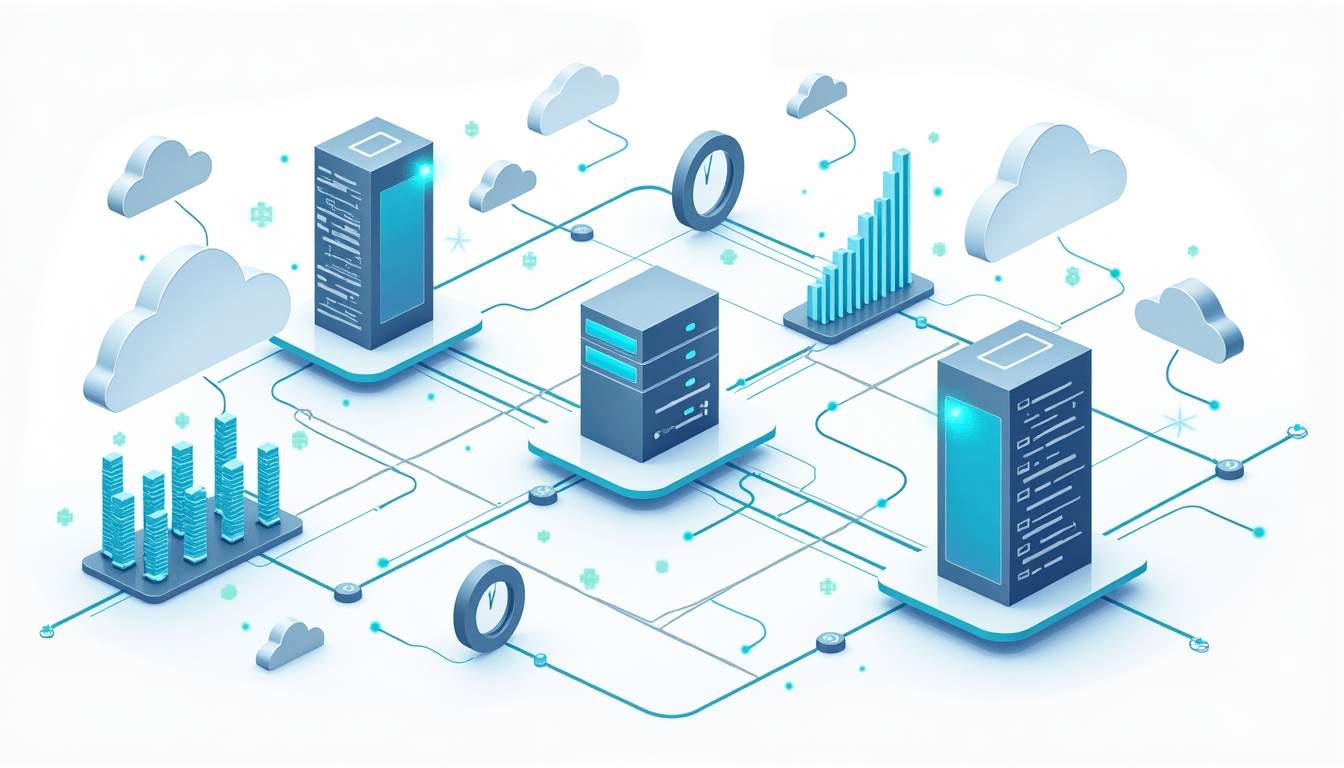How to Benchmark RPC Providers Correctly (2025 Guide)
As blockchain applications continue to scale and diversify, selecting the right Remote Procedure Call (RPC) provider has become a critical decision for developers and enterprises alike. With the growing complexity of Web3 infrastructure and the increasing demand for reliability, speed, and cost-efficiency, benchmarking RPC providers correctly is essential to ensure your decentralized application (dApp) performs optimally.
This comprehensive 2025 guide will walk you through the key metrics, methodologies, and practical insights needed to benchmark RPC providers effectively. Whether you're a developer looking to optimize Ethereum RPC endpoints or a project manager evaluating multi-cloud blockchain infrastructure, this article offers a structured approach to help you make informed decisions.
Understanding the Importance of RPC Benchmarking
RPC providers serve as the backbone of blockchain applications by enabling communication between your app and blockchain nodes. However, not all RPC providers are created equal. Differences in latency, uptime, failover capabilities, and cost can significantly impact user experience and operational expenses.
Benchmarking RPC providers helps you identify the best fit for your specific use case, whether it’s minimizing downtime, reducing latency, or optimizing costs. It also provides insights into the reliability of providers’ auto-routing, failover mechanisms, and multi-cloud capabilities, which are increasingly important in 2025’s competitive Web3 landscape.
Why RPC Provider Performance Matters
RPC downtime or latency spikes can lead to transaction failures, delayed confirmations, and poor user experience, ultimately affecting your dApp’s reputation and adoption. For example, a single RPC outage can cost blockchain projects thousands of dollars in lost transactions and user trust. Additionally, inefficient RPC routing can inflate operational costs, especially when scaling to millions of API calls.
Therefore, benchmarking is not just a technical exercise but a strategic necessity to ensure your blockchain infrastructure is resilient, scalable, and cost-effective.
Key Metrics to Evaluate When Benchmarking RPC Providers
To benchmark RPC providers correctly, focus on a set of core performance indicators that reflect both technical and business priorities.
1. Latency and Response Time
Latency measures the time it takes for an RPC request to travel from your application to the blockchain node and back. Lower latency improves user experience by speeding up transaction confirmations and data retrieval.
Benchmarking latency involves sending a series of test requests across different regions and measuring average, median, and peak response times. Multi-region RPC routing can reduce latency by directing requests to the nearest or fastest node, a feature increasingly offered by advanced RPC providers.
2. Uptime and Reliability
RPC uptime is critical for maintaining continuous access to blockchain networks. Providers with robust failover and auto-routing capabilities can dynamically switch between nodes or providers to avoid downtime.
When benchmarking, track the historical uptime percentage and the provider’s ability to handle outages through redundancy. Multi-provider RPC routing is the future-proof approach to mitigate risks associated with single-provider dependence.
3. Failover and Load Balancing Capabilities
Failover ensures your application automatically switches to a backup RPC endpoint if the primary one fails, while load balancing distributes requests evenly to prevent bottlenecks.
Testing these features involves simulating node failures and high traffic scenarios to observe how the provider manages request routing. Providers that integrate multi-cloud proxies (MCP) often excel in this area by orchestrating API calls across diverse infrastructure.
4. Cost Efficiency
RPC costs can escalate quickly, especially for applications with high transaction volumes. Benchmarking should include a detailed analysis of pricing models, including per-request fees, subscription tiers, and overage charges.
Auto-routing solutions that optimize request distribution across multiple providers can reduce costs by up to 40%, making cost benchmarking a vital part of your evaluation.
5. API Features and Developer Experience
Beyond raw performance, consider the richness of API features, documentation quality, and support services. Providers offering API orchestration and aggregation simplify integration and scaling, which can save significant development time.
Step-by-Step Approach to Benchmarking RPC Providers
Benchmarking RPC providers requires a systematic approach combining quantitative testing with qualitative assessment. Here’s a practical framework to guide your evaluation process.
Step 1: Define Your Use Case and Requirements
Start by outlining your application’s specific needs. Are you building a high-frequency trading platform requiring ultra-low latency? Or a decentralized social media app prioritizing uptime and cost-efficiency? Clarifying your priorities will help tailor your benchmarking criteria.
Step 2: Select a Representative Set of Providers
Choose a diverse pool of RPC providers, including popular options like Alchemy, QuickNode, Infura, and emerging multi-provider routers like Uniblock. This variety allows you to compare traditional single-provider models against modern multi-provider auto-routing solutions.
Step 3: Set Up Testing Environment
Create a controlled environment to send RPC requests consistently. Use automated scripts to simulate real-world traffic patterns, including peak loads and failover scenarios. Incorporate multi-region testing to evaluate latency differences.
Step 4: Measure and Record Key Metrics
Collect data on latency, uptime, failover response times, and error rates over an extended period to capture variability. Use monitoring tools and dashboards to visualize performance trends.
Step 5: Analyze Cost Structures
Calculate the total cost of ownership based on your projected usage. Factor in potential savings from auto-routing and multi-cloud strategies that distribute load to cheaper or more efficient providers dynamically.
Step 6: Evaluate Developer Experience and Support
Assess API documentation, SDK availability, customer support responsiveness, and community engagement. These qualitative factors can significantly influence your development speed and issue resolution.
Step 7: Make an Informed Decision
Combine quantitative data with qualitative insights to select the RPC provider or combination of providers that best aligns with your goals. Consider future scalability and the provider’s roadmap for new features like multi-cloud proxy integration.
Advanced Considerations for 2025 and Beyond
As blockchain infrastructure evolves, benchmarking must keep pace with emerging technologies and trends.
Multi-Provider RPC Routing: The New Standard
Single-provider RPC setups are increasingly seen as a risk due to potential outages and vendor lock-in. Multi-provider RPC routers aggregate multiple endpoints, automatically routing requests based on performance and availability. This approach enhances reliability and reduces latency, making it a critical factor in benchmarking.
Leveraging Multi-Cloud Proxies (MCP)
Google’s Multi-Cloud Proxy (MCP) technology and similar solutions enable seamless integration across multiple cloud providers, offering improved redundancy and geographic distribution. Benchmarking providers that support MCP can provide insights into how multi-cloud strategies impact your application's scalability and resilience.
API Orchestration vs Aggregation
Understanding the difference between API aggregation (combining multiple APIs into one) and orchestration (managing complex workflows across APIs) is vital when evaluating RPC providers. Providers offering advanced orchestration capabilities can simplify your backend architecture and improve efficiency.
Common Pitfalls to Avoid When Benchmarking RPC Providers
Benchmarking can be complex, and certain mistakes can lead to misleading conclusions.
Ignoring Real-World Traffic Patterns
Testing only under ideal conditions or low traffic can mask performance issues. Ensure your benchmarking simulates peak loads and network variability to reflect actual usage.
Overlooking Failover and Redundancy Testing
Many providers perform well under normal conditions but fail to handle outages gracefully. Incorporate failover simulations to assess true reliability.
Focusing Solely on Price
While cost is important, the cheapest provider may not offer the reliability or features needed for your application. Balance cost with performance and support quality.
Neglecting Developer Experience
Complex or poorly documented APIs can slow development and increase maintenance costs. Include developer experience in your evaluation criteria.
Conclusion
Benchmarking RPC providers correctly in 2025 requires a holistic approach that balances performance, reliability, cost, and developer experience. With the rise of multi-provider routing, multi-cloud proxies, and advanced API orchestration, the landscape is more dynamic than ever.
By following a structured benchmarking process and focusing on key metrics such as latency, uptime, failover capabilities, and cost efficiency, blockchain projects can ensure they select the optimal RPC infrastructure. This not only enhances user experience but also safeguards against outages and optimizes operational expenses, positioning your dApp for success in the rapidly evolving Web3 ecosystem.
Investing time and resources into thorough benchmarking today will pay dividends in scalability, reliability, and cost savings tomorrow.
Ready to elevate your dApp's performance and streamline your Web3 infrastructure management? Join over 2,000 developers who are already harnessing the power of Uniblock to connect seamlessly to blockchain data across 100+ chains. With our advanced orchestration platform, you can say goodbye to vendor lock-in, minimize latency, and significantly cut down on infrastructure costs. Start building with Uniblock today and experience the simplicity of a single API endpoint that intelligently auto-routes your traffic, ensuring maximum uptime and scalability for your project.
.svg)






